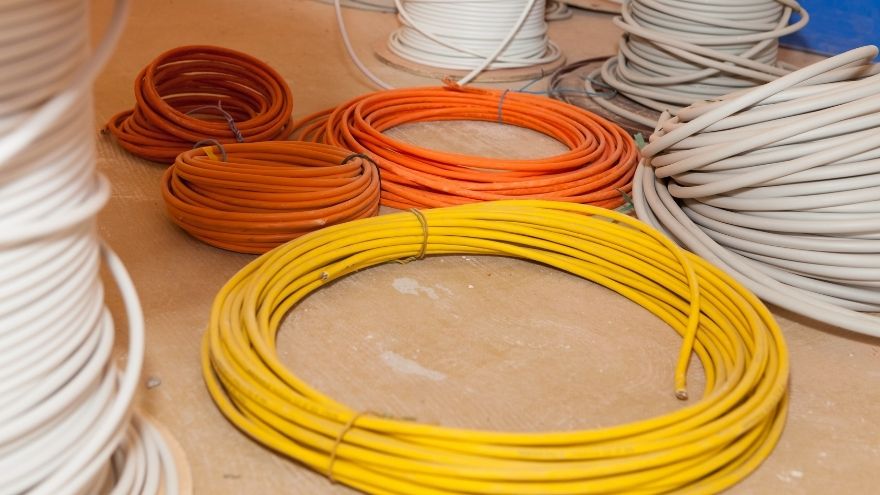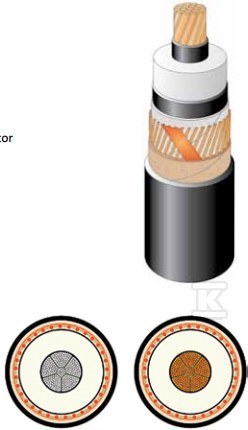Working with live cables is a task that requires great precision and safety. Installers must use the right techniques and tools to ensure efficient and safe work. In this article, we will explain how to connect a branch to a live ground cable, which connectors to choose, and what the regulations say about connecting live cables.

Check the underground cables at the Onninen wholesaler
Safe methods for working on live cables
When connecting a live earth cable , it is extremely important to take extraordinary precautions. Improper handling can lead to cable breakdown, which in turn can have serious consequences – from insulation damage to electric shock, which can happen at any time.
 Safe use of electrical devices and installations requires compliance with safety rules specified in special legal regulations. The law states that people who want to perform such installations, or even just repair a damaged section, must be properly trained and authorized to perform their duties. Appropriate authorizations allow installers to act confidently and safely.
Safe use of electrical devices and installations requires compliance with safety rules specified in special legal regulations. The law states that people who want to perform such installations, or even just repair a damaged section, must be properly trained and authorized to perform their duties. Appropriate authorizations allow installers to act confidently and safely.
There are tools available on the market that help to carry out the work safely. One of them is cable locators, which allow you to locate a cable placed in the ground or a damaged section of it, without having to dig it up. This significantly increases safety, as well as the working conditions of an electrician.
Connecting the branch to the ground cable requires precision and the use of appropriate tools and techniques. Before starting work, carefully inspect the connection cable and the input cable. This will minimize the risk of cable punctures and other damage.
Steps for connecting a branch to an earth cable:
- Cable location – With the help of cable locators, installers can precisely determine the location of an underground cable.
- Connection point insulation – the point where the branch will be connected must be appropriately insulated.
- Selecting the right connectors – depending on the type of cable (e.g. aluminium underground cables or copper underground cables), installers select the right connectors and tools.
- Connecting the branch – at this stage, the wires are physically connected using insulated tools.
It should be emphasized that connecting a branch to an underground cable can be complicated. It is not only about technical correctness, but also about ensuring the maximum level of safety. In principle, the basis is compliance with legal standards and recommendations of tool manufacturers.
Selecting the right connector and tools for underground cable installation
Choosing the right connectors is an important part of working with underground cable. Installers must consider the type of cable and its diameter. The question of which tools will be best for installation can be answered by judging from the cable layout, adjusting the type of connector.
 For example, a fuse box in a house and an electricity meter require an appropriate strip (distribution board) that will ensure the correct output of power from the installation and enable its safe operation.
For example, a fuse box in a house and an electricity meter require an appropriate strip (distribution board) that will ensure the correct output of power from the installation and enable its safe operation.
When selecting cables, you should also take into account the differences in materials from which the underground cables are made:
- Copper underground cables have better conductivity. Copper has a higher electrical conductivity than aluminum, which makes copper cables more efficient . In other words, for the same wire diameter, copper cables can conduct more current than their aluminum counterparts. Copper is also more durable and flexible. Unfortunately, it is also more expensive.
- Aluminum underground cables are lighter, making them easier to install over longer distances, especially in places where large amounts of wire need to be moved. They are also cheaper – the lower price of aluminum makes aluminum underground cables a more cost-effective solution in installations where cost reduction is important.
What do the regulations say about connecting live cables?
2Y.jpg) The regulations regarding work with an underground cable are strictly regulated. The law requires that work related to connecting the branch to an underground cable be performed by suitably qualified persons, who have authorizations to work with electrical installations (Regulation of the Minister of Economy of 17 September 1999 regarding the principles of occupational health and safety at power equipment and installations - Journal of Laws No. 80, item 912). This is important not only for ensuring safety, but also compliance with applicable legal standards.
The regulations regarding work with an underground cable are strictly regulated. The law requires that work related to connecting the branch to an underground cable be performed by suitably qualified persons, who have authorizations to work with electrical installations (Regulation of the Minister of Economy of 17 September 1999 regarding the principles of occupational health and safety at power equipment and installations - Journal of Laws No. 80, item 912). This is important not only for ensuring safety, but also compliance with applicable legal standards.
According to the regulations, installers must use appropriate personal protective equipment, such as insulating gloves, tools for working under voltage, and protective clothing. Furthermore, the connection of the branch should be made at a precisely defined time, in favorable weather conditions, to minimize the risk of damage to the building.
Choosing the right tools and techniques
Well-chosen tools are essential for safe work on an underground cable. The rule is that tools must be properly insulated and adapted to work under voltage. It is also worth using tools that allow precise connection of the branch without having to turn off the power in the entire house.
Some work may require the use of specialist tools, such as cable locators or live connectors.
In the Onninen wholesale offer you will find an exhaustive range of products and tools, including power cables that meet all the necessary standards. By choosing products available at Onninen, you can be sure that work on electrical installations will be safe and in accordance with applicable regulations.